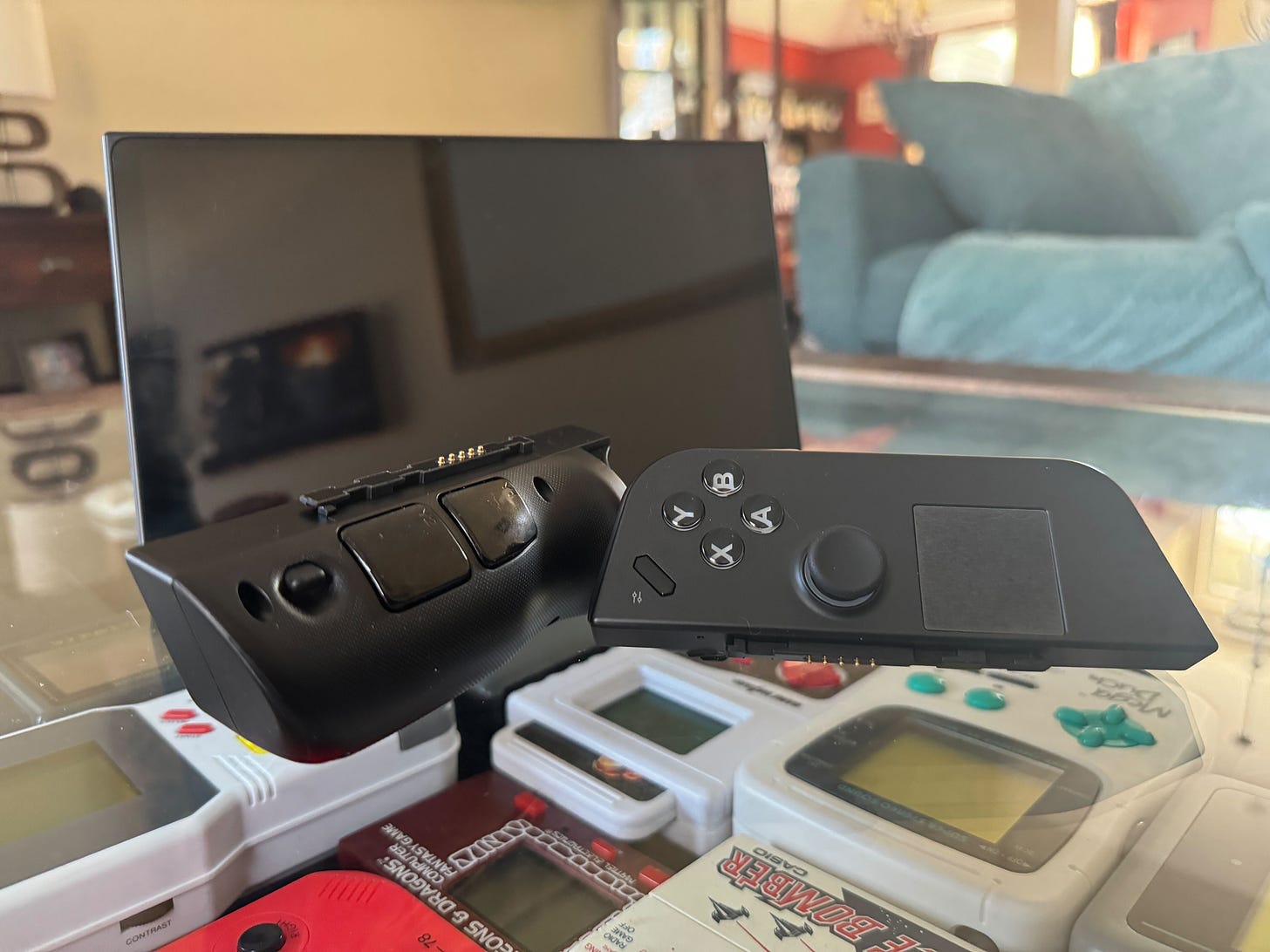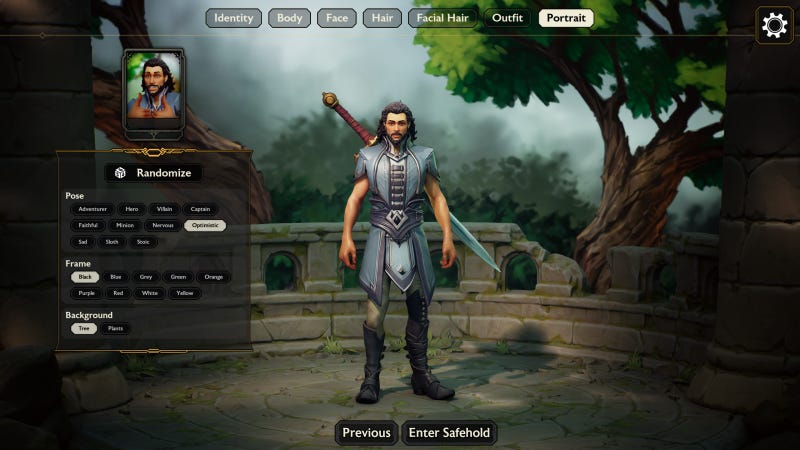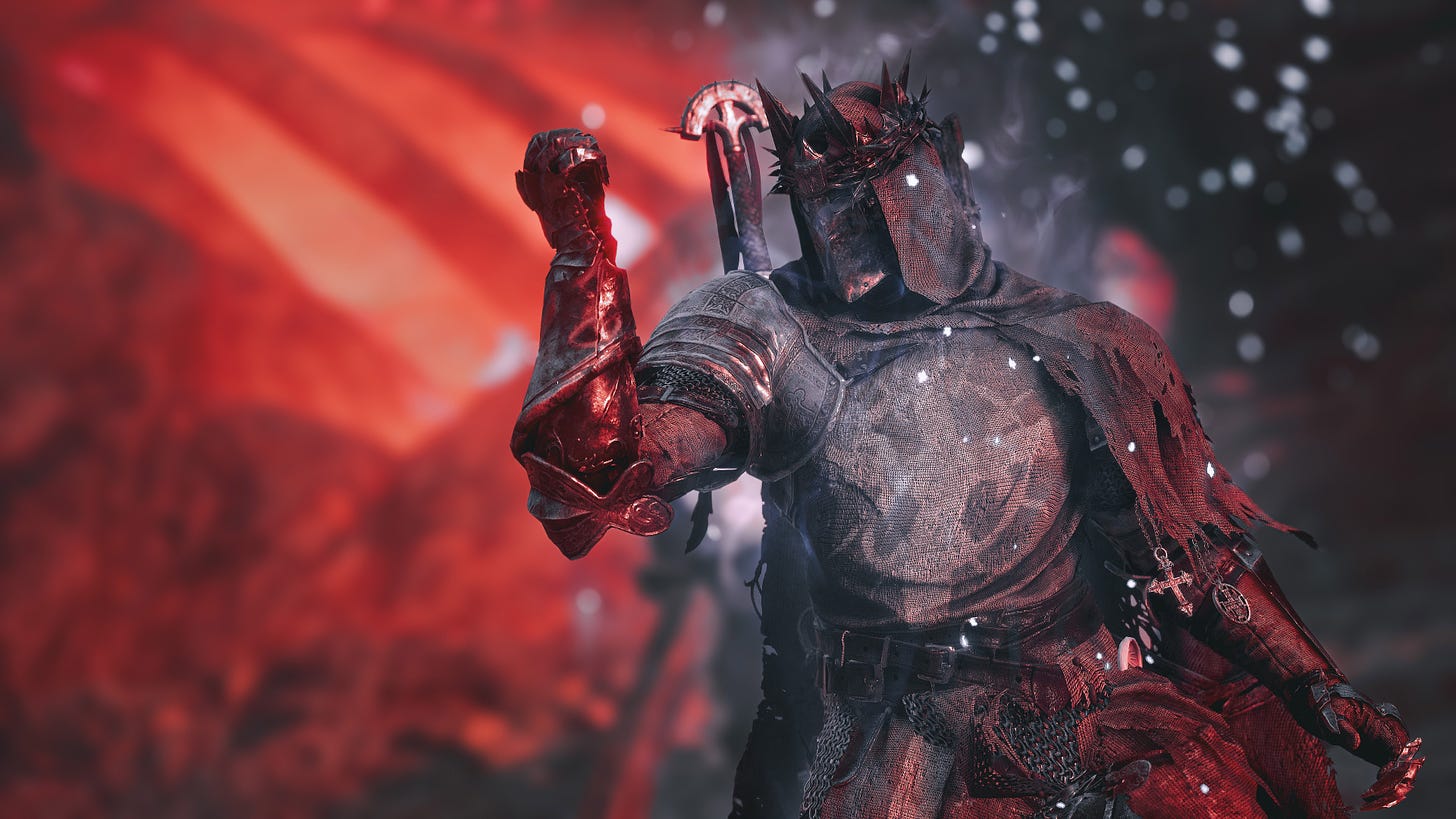Lenovo’s Legion Go is a chunky, decadent system
February 14, 2024It has among the beefiest screens in the burgeoning handheld PC gaming market, arguably the fastest chipset, and enough extra features—useful and unusual—to make it stand out from what is slowly becoming a crowd.
The one thing Lenovo’s Legion Go didn’t nail is the one thing that systems running on Windows PCs really shouldn’t have to deal with: the user interface.
Thanks for reading Game! Subscribe for free to receive new posts and support my work.
Subscribed
The thing is, though, the current state of Windows just isn’t designed for handheld gaming. You can see that in what Lenovo attempted with its Legion Space and what Asus mostly delivered with its Armory Crate. Broaden your view to include Linux, and you’ll see the best handheld user interface currently on the market: the Steam Deck’s modified Big Picture mode.
The good news is that Microsoft has within its power the ability to fix this issue through a software update. They could even deliver a user interface that leans into the Xbox design, but remains open and valuable to other stores like Epic Games Store, Steam, and GOG.
“An otherwise decadent machine.”
Speaking with the folks at Lenovo, they don’t appear to be waiting for an outside solution to a UI that is the most significant mark against an otherwise decadent machine.
“From the launch, we had transparent discussions and headlights into coming features and fixes on a near-weekly basis on our forum and other online outlets,” a spokesperson told me. “Lenovo has also started building a beta-testing group for the community.”
While the current state of Legion Space offers an at-times awkward experience connecting to stores and launching games, once you get into a game, that all goes away.

There’s plenty of good to say about this beefy system.
Take its display: an 8.8-inch QHD touchscreen that can deliver a 144 refresh rate at 1600p. Compare that to the Asus’ ROG Ally, which stuck with the more traditional 7-inch FHD screen with a 120 refresh rate. And the Steam Deck OLED offers up a 7-4 inch OLED that tops out at 90 Hz.
That inch and change in screen space may not sound like a lot, but it’s significant when you’re playing, especially given that you’re not compromising refresh rates at similar settings. It’s a big, beautiful screen.
Of course, that screen size comes with some drawbacks. Most noticeable is the size and weight. This is a big device. It’s fairly comfortable to game with in your hands, but it’s at the cusp of what you might define as a handheld. It’s longer, wider, and thicker than the competition and, of course, heavier. And while it has a bigger battery, most of that extra power is sucked up by the screen.
Fortunately, the screen isn’t the only thing the Legion Go has going for it. Both it and the high-end ROG Ally use AMD’s relatively new Ryzen Z1 Extreme, a chip designed specifically for this task. Both also sell have similar $700 models.

The thing I like best about the Lenovo Go isn’t its screen, though. That’s the attention-getter, but the system is also stacked with several small, intelligent design decisions. It’s the sort of thing you only notice after you’ve owned a system for a while.
It has, for instance, two USB C ports that can be used for charging, among other things. One is located on the top of the system, and the other at the bottom. So you can charge and play simultaneously without worrying about the plug being in the way. There’s a touchpad for easier navigation on Windows desktop. A built-in kickstand pulls out to hold the device if you want to play without it being in your hands.
Why would you do that? Because both controllers slide out of the system, like the Nintendo Switch, to allow for more comfortable gaming. The pop-out controllers also feature Hall Effect joysticks and loads of buttons.
The left controller includes a Legion Space button, thumbstick, directional pad, menu and view buttons, as well as bumper, trigger, programmable Y1 and Y 2 buttons, and a release button. The right controller has a Legion quick settings button, four face buttons, a thumbstick, touch screen, bumper and trigger. Around back you’ll find M1, M2, M3, Y3 buttons and a release button.

Finally, if most consumer electronics are defined by what is good and bad about them, the Legion Go begs to be judged in a third category as well: the funky.
The system has a built-in gyroscope sensor, and it comes with a little stand for the right controller. The idea here is to pop that right controller into the stand, turn on a sensor built into the bottom of it, and grip it a bit like an old-school joystick. Voila: FPS mode. This is basically turning the controller into an upright mouse with a bunch of buttons and triggers. It works surprisingly well, but it’s also the sort of addition that seems a bit extraneous.
(As an aside, because the right controller is designed to also be used turned sideways in FPS mode, its back button placement is odd and it has a few extra buttons which can feel not so great. Selling another right controller without the FPS support would be a great idea, though the current design isn’t a deal breaker.)
The Lenovo folks told me they included the unusual feature to provide more flexibility in terms of how a person plays. And it does.
While I might not find it particularly useful, I’m sure there are those who will, and it’s encouraging to see a hardware manufacturer pushing creativity in a space this new.

Having spent quite a bit of time with the Steam Deck OLED, the Asus ROG Ally, and the Lenovo Legion Go, I find it hard to pick one perfect system.
The Steam Deck is excellent primarily because of its ease of use and user interface, but that’s also the big problem with it: It’s a pain to sideload other game stores, and there are way too many games on the Steam Store that aren’t supported.
The Asus ROG Ally is the safe-bet, middle child, featuring a solid, more compact design and the second-best user interface among the bunch.
The Legion Go wins hands down on screen size and those wonderful little touches. On the other hand(s) it’s bigger. Maybe too big for some. Of course, you’re not putting any of these systems in your pocket; you may not even squeeze them easily into a svelte backpack and leave enough room for your other travel gear.
“…destined to become an important facet of computer gaming.”
None of these systems are bad, but they’re all early entries in what a lot of companies believe is going to be a significant, important element of PC gaming moving forward.
AMD told me last year they see these as the next gaming laptops. Lenovo said they see the Legion Go as a “complement to a user’s other Lenovo Legion devices.”
Lenovo sees this segment of the PC gaming space as nascent, but they also believe that it will continue to evolve.
I don’t see handheld gaming systems sparking the same seismic shift that gaming laptops did, but ultimately, PC gaming on the go played on a controller framing a screen is destined to become an important facet of computer gaming.
Expect many more devices in this space and—I can only believe—a significant investment in how Windows serves up those experiences.
A small note: If you’re making the transition over to Bluesky, you can find me there as well. More importantly, I’ve created a little feed for folks who want to have gaming news delivered to this latest flavor of social media. You can find it here.
Elsewhere

The next big thing in role-playing will be powered by Pragma

Weeping for strangers: The horror of David Lynch-infused I Did Not Buy This Ticket

How to master the art of in-game photography
Thanks for reading Game! Subscribe for free to receive new posts and support my work.